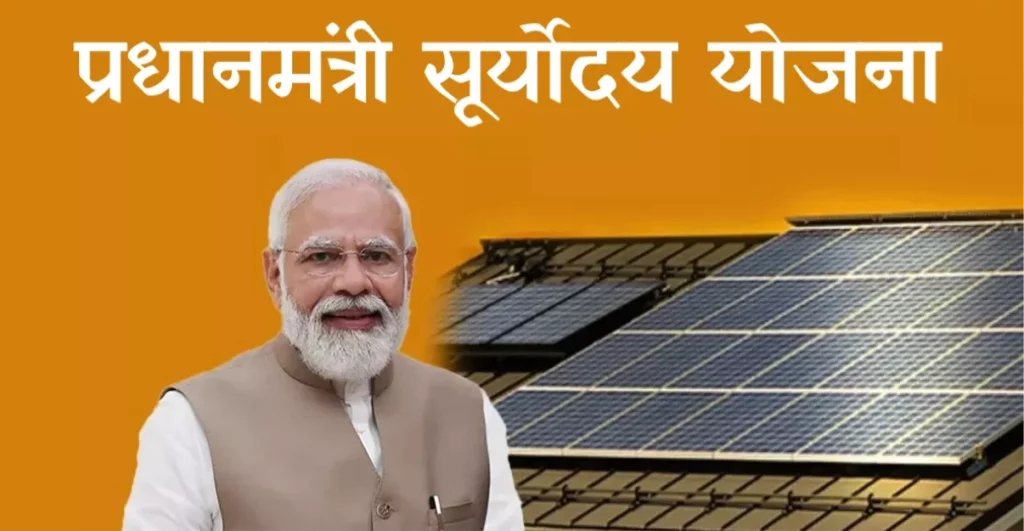Our honorable Prime Minister announced the launch of the Rooftop solar scheme on the auspicious occasion of the Ram Temple opening ceremony. And this led to the curiosity among the folks about the rooftop solar scheme. How will it work? What are the plans of govt.? And the list of queries goes on…
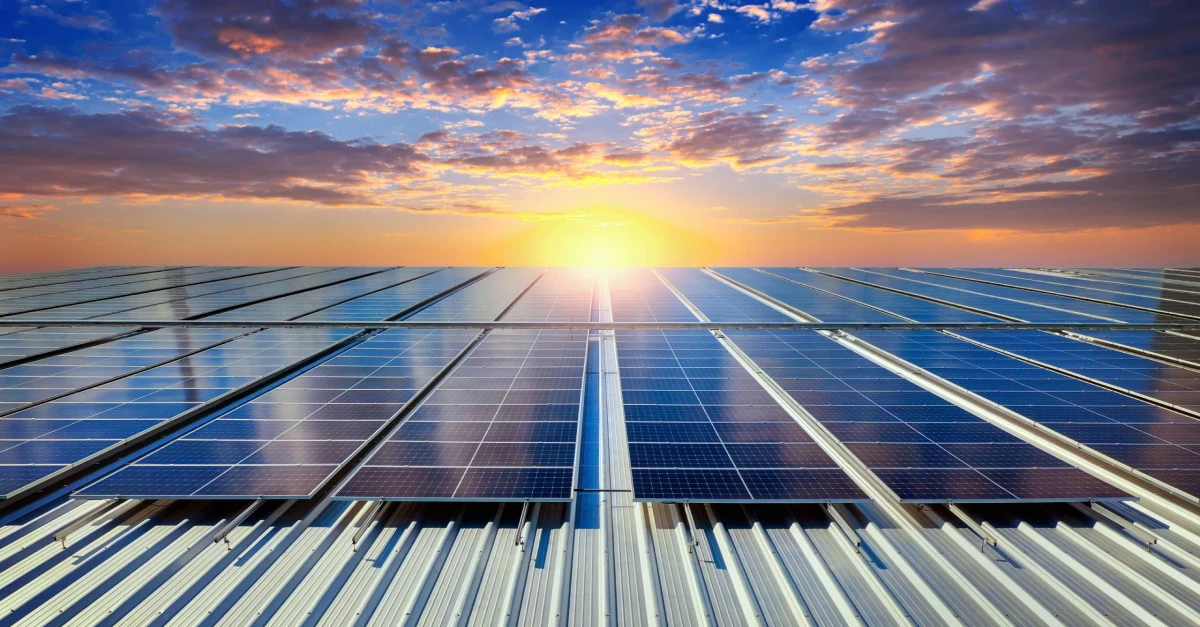
If you are also curious about it then you have come to the right place. In this write-up, we will thoroughly explain the rooftop solar scheme and the visionary plans of the government with the scheme.
Stay tuned!
(A) Synopsis: Trifecta of Solar Energy, Indian Households, and Indian Government
What’s your first question when buying or renting a house/apartment/PG/ or any other accommodation? Is the electricity bill included with the rent or not? In today’s world, electricity is no less important than food, water, and clothes. We don’t have a sufficient amount of nuclear power plants like European or east asian countries.
Also, our thermal power plants will shut down as soon as the coal and petroleum reserves are finished. We don’t have rivers and water resources in every part of the country, which limits the production of hydroelectric power.
Looks like we will have havoc in terms of electricity…
Not really!
We have one powerful renewable energy source that can shun all the problems described above.
It is solar energy! Look, India, being a tropical country has abundant natural sunlight. So why haven’t we used it abundantly till now?
Well, solar panels that play the main role in converting sunlight into electricity don’t fit into the pocket of everyone. Yes, it is far more expensive than you can imagine.
Let me give you some data-
- The amount of electricity required per day for a 2-3 BHK house is 800 watts.
- The price of solar panels producing 425 watts of electricity is Rs.36,000.
Now you can understand why Indians aren’t that enthusiastic about installing solar panels or producing electricity through solar energy.
It is mainly because of the sour relationship between Indians with the expensive solar panels. With Indians, we are referring the the lower and middle class households that are the major proportion of our population.
This is the point where the Government steps in and plays a huge role in lowering the tension between the expensive solar panels with common households.
Go through the next section and you will get detailed information about it!
(B) What is the Rooftop Solar Scheme?

The ‘PM Suryodaya Yojana’ or the rooftop solar scheme is a government plan in India to encourage homes to use solar energy. The Prime Minister introduced it after the Ram Temple opening ceremony in Ayodhya.
The idea is to put solar panels on people’s rooftops. In the Budget 2024-25, the Finance Minister talked about it, saying it’s a great way to use the sun’s power.
With this plan, solar panels will be set up in homes to give them free electricity from the sun. If there’s extra electricity, people can sell it to companies that provide electricity. This is especially helpful for poorer and middle-class families, as they can save about Rs.15,000 to Rs.18,000 every year.
Let’s look at the details of the Rooftop Solar Scheme including the benefits and plans-
| Benefit | Suitable Rooftop Solar Plant Capacity for Households | Average Monthly Electricity Consumption (units) | Subsidy Support |
| Free electricity for households | 0-150 units | 1-2 kW | ₹30,000 to ₹60,000 |
| Reduced electricity costs for the government | 150-300 units | 2-3 kW | ₹60,000 to ₹78,000 |
| Increased use of renewable energy | Above 300 units | Above 3 kW | ₹78,000 |
The goal is to install solar panels in one crore homes all over the country through this program. It’s a way to use clean energy, save money, and even make a little extra by selling surplus power.
(C) Government’s Plans: Key Objectives of the Rooftop Solar Scheme
In this section, we will look into the prime objectives of the Rooftop Solar Scheme to understand what the government is planning with it.
Look at the table given below-
| Government’s Plans | Objectives of the Rooftop Solar Scheme | Details |
| Energy Self-Reliance | Aims to empower households by leveraging solar energy, promoting self-reliance for electricity needs. | By tapping into solar power, households can reduce their dependence on conventional energy sources. This not only leads to cost savings but also empowers families to have more control over their energy consumption. It aligns with the broader goal of promoting sustainable and independent energy use. |
| Solar Rooftop Installation | Encouraging the widespread installation of photovoltaic solar panels on rooftops, linked to the main electricity supply. | The scheme facilitates the adoption of solar panels, allowing households to generate their electricity. This not only contributes to a reduction in reliance on the central power grid but also opens avenues for potential cost savings for consumers. The emphasis is on enhancing energy efficiency at the individual household level. |
| Additional Income | Providing beneficiaries with an opportunity for additional income through surplus power generation. | When households generate more electricity than they consume, the surplus power can be sold back to the grid. This not only benefits individual households by creating an additional revenue stream but also promotes a dynamic energy ecosystem where excess energy is efficiently utilized. |
| Inclusion of BPL and Poor Citizens | Extending the scheme benefits citizens Below the Poverty Line (BPL) or those with limited resources. | The initiative ensures that economically disadvantaged individuals can participate, making solar energy accessible to a broader population. By including BPL and poor citizens, the scheme addresses social equity concerns, fostering inclusivity in the country’s journey towards energy self-sufficiency. |
| Comprehensive National Campaign | Launching a nationwide campaign to encourage widespread adoption of rooftop solar panels. | Directed by Prime Minister Narendra Modi, this campaign plays a crucial role in creating awareness and motivating residential consumers to embrace solar technology. The comprehensive nature of the campaign ensures that people across the country are informed about the benefits of rooftop solar panels, fostering a collective effort toward sustainable energy practices and reinforcing the success of the PM Suryodaya Yojana. |
Sounds great! Now the question arises, how you can cooperate with the government to achieve the objectives described above? By registering yourself for the Rooftop Solar Scheme!
And how will you do that? Go through the next section to find out!
(D) Eligibility Criteria and Application Process for the Rooftop Solar Scheme
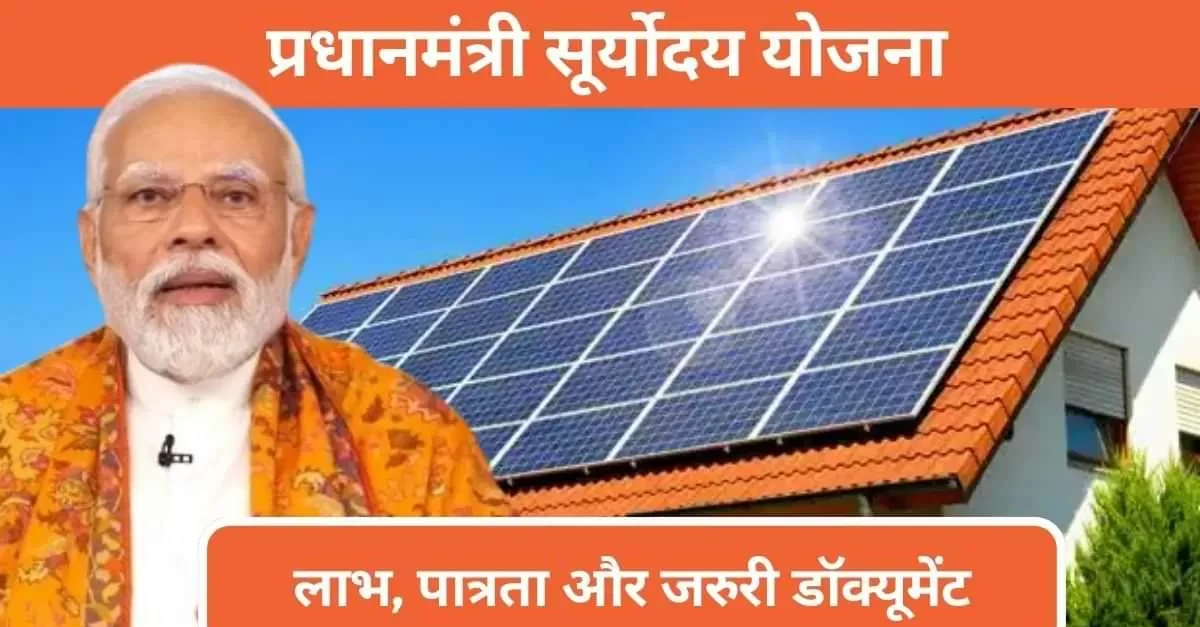
We will look at them one by one-
(D.1) Eligibility Criteria & Rules
First, let’s look at the eligibility criteria and rules for the Rooftop Solar Scheme-
- Indian Citizenship: The household must be owned by an Indian citizen. The applicants should be permanent citizens of India.
- Suitable Roof: The house must have a roof suitable for installing solar panels.
- Valid Electricity Connection: The household must have a valid electricity connection.
- No Previous Subsidy: The household must not have availed of any other subsidy for solar panels.
- Income Limit: The applicant’s annual income should not exceed Rs.1 or Rs.1.5 lakh.
- Document Verification: Applicants must possess all the original documents required for verification.
- Exclusion: Government employees are not eligible to avail of the scheme’s benefits.
(D.2) Required Documents
To participate in the scheme, you will need the following documents-
- Aadhar Card
- Income Certificate
- Domicile Certificate
- Mobile Number
- Electricity Bill
- Bank Passbook
- Passport-size photo
- Ration Card
(D.3) Application Process of the Rooftop Solar Scheme
You need to follow the steps given below to avail the benefits of the Rooftop Solar Scheme-
| Steps | Application Process | Description |
| Step 1 | Registration | Visit the official website and provide the necessary details for registration. |
| Step 2 | Login | Use your consumer number and mobile number to log in. |
| Step 3 | Apply for Installation | Apply for rooftop solar installation. |
| Step 4 | Feasibility Approval | Wait for feasibility approval from the local DISCOM (Distribution Company). |
| Step 5 | Installation | Install the solar plant through registered vendors. |
| Step 6 | Net Meter | Apply for a net meter to measure electricity generation and consumption. |
| Step 7 | Inspection and Subsidy Disbursement | After installation and inspection, submit bank account details for subsidy disbursement. |
By following these steps, you can embrace solar energy and contribute to a greener and more sustainable future!
(E) Behind the Scenes: What led to the launch of the Rooftop Solar Scheme?
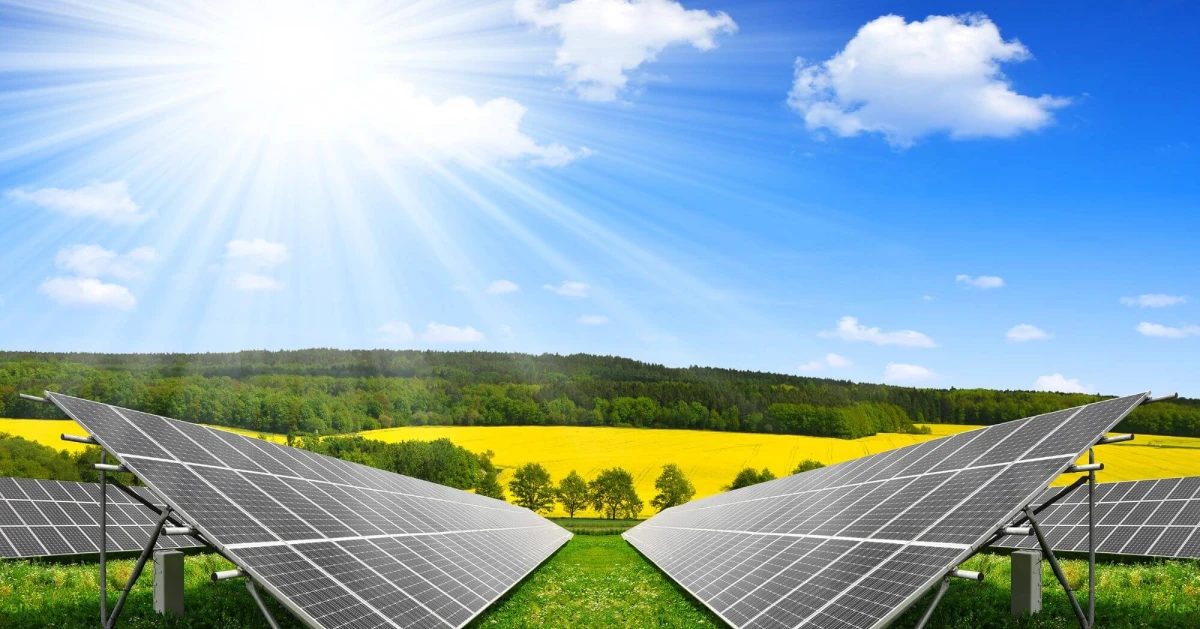
Ever wondered what led to the launch of the Rooftop Solar Scheme in India? Here’s the scoop. India set an ambitious goal of installing 175 gigawatts (GW) of renewable energy by 2022, encompassing solar, wind, biomass, and hydro resources.
However, the dream fell short due to the sluggish pace of the rooftop solar power installation program. By the end of the year, only 5.87 GW was generated, far below the targeted 40 GW.
Recognizing the “tardy pace of progress,” the Parliamentary Standing Committee on Energy emphasized the need for change. They urged the Ministry of New and Renewable Energy (MNRE) to ensure wider adoption of grid-connected rooftop solar photovoltaic projects (RSPV) to meet the revised deadline of March 2026.
Despite the government’s decade-long efforts, the rooftop solar installation target remained elusive. To breathe new life into this segment and boost the contribution of solar power to the grid, the Centre recently introduced the Pradhan Mantri Suryodaya Yojana (PMSY). Highlighted in the interim Budget 2024 by Finance Minister Nirmala Sitharaman, the scheme reflects the Prime Minister’s commitment.
So, what’s the big deal with the PMSY or the Rooftop Solar Scheme?
Well, it aims to tap into the vast potential of rooftop projects in residential areas. The Finance Minister emphasized that the scheme would benefit one crore families, providing them with up to 300 units of free electricity per month and annual savings of up to Rs 18,000.
(F) What is a Rooftop Solar Power System and How does it work?
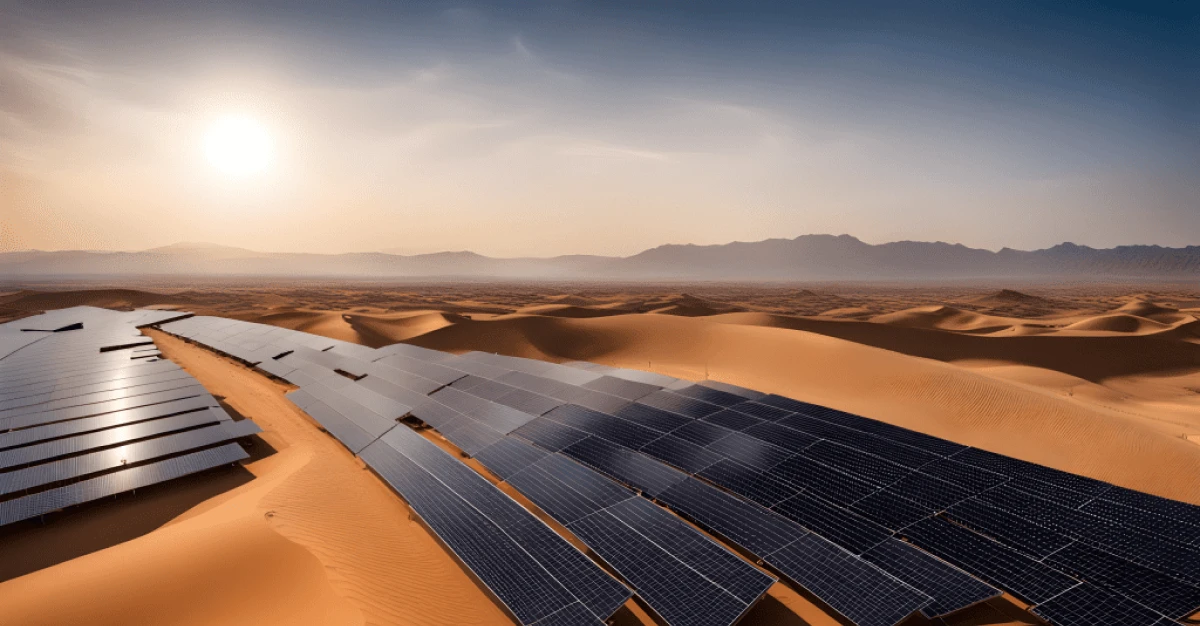
Have you ever wondered about rooftop solar power systems and how they function? Let’s dive into the basics. Spaces on the ground, as well as rooftops of homes and commercial or industrial buildings, receive ample raw solar energy. This energy can be harnessed to generate solar power.
When solar photovoltaic panels are placed atop these structures, it form what we call a rooftop solar system. These systems can either be grid-connected or standalone, known as an off-grid solar system.
Let’s look at them one by one-
(F.1) Off-Grid Solar System
In the case of an off-grid solar system, it operates independently without being connected to a wider electric supply system. It relies on storage devices like batteries, although they can be expensive and bulky. While it’s self-sustaining, it only stores the electricity it produces.
(F.2) Grid-Connected Rooftop Solar System
On the other hand, a grid-connected rooftop solar system feeds solar energy into the utility grid. This system typically includes solar PV modules, an inverter, a module mounting structure, monitoring and safety equipment, and meters.
The inverter converts the DC power from solar panels to AC power, which is then fed into the grid. Meters keep track of the electricity flow in both directions.
(F.3) Net-Metering: Balancing the Energy Equation
In a grid-connected system, if the rooftop plant generates more solar energy than you use, the excess is sent to the grid. On cloudy days when solar energy is limited, power is drawn from the grid.
A net meter records the energy flow in both directions, calculating the net energy used at the end of the billing period. You pay for the net energy units used, which is the difference between total imported units and exported solar units.
This system is known as net metering.
(F.4) Advantages of Grid-Connected Systems
Grid-connected solar power systems reduce reliance on electricity from external suppliers, helping you save on electricity costs. There are two models for installing rooftop solar systems: CAPEX, where you bear the cost and own the system, and RESCO, where a third party owns and maintains the system, and you purchase the generated energy through a pre-decided tariff.
Understanding these models can help you make informed decisions about adopting rooftop solar technology.
A Quick Recap

Sorry for interrupting you in the middle of the story! Here we are notifying you that we have covered numerous other governmental schemes too. Some of them are-
- What is the PM Garib Kalyan Anna Yojana & its benefits?
- Complete list of Government Schemes for women in India
- The Great Nicobar Navy Base
- 6 Key Takeaways for the Public in India’s Budget 2024
- India’s Big Plans to Upgrade the Mumbai Infrastructure
You can go through them for more details.
(G) What is driving India’s solar power plan?
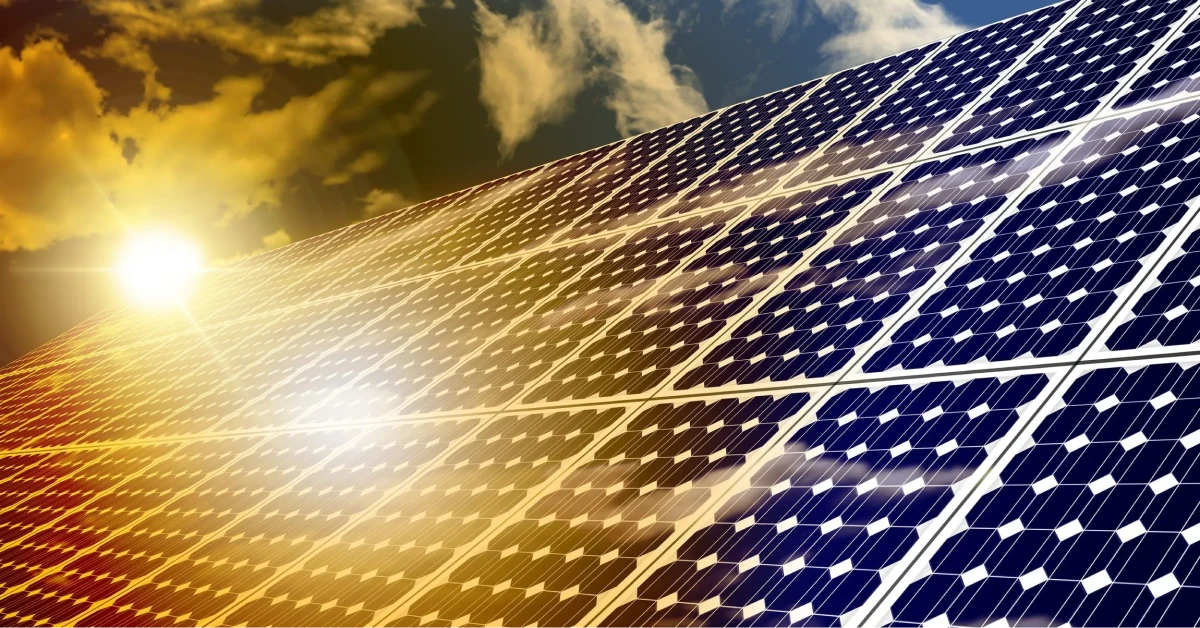
Do you know why India is so keen on its solar power plan? Well, here’s the reason. With 250 to 300 days of sunshine per year and an annual solar energy reception of 5,000 trillion kWh, India boasts immense solar potential. The government is harnessing this by implementing policies and financial incentives to propel solar energy to the forefront.
The ultimate goal?
Achieving net-zero carbon emissions by 2070 and deriving 50% of electricity from renewable sources.
(G.1) Ambitious Targets in the Face of Emission Challenges
As one of the largest greenhouse gas emitters globally, India has set an ambitious target of 500 GW from non-fossil sources by 2030. The plan is to install 485 GW of renewable energy capacity, with solar energy taking center stage in this commitment.
(G.2) Evolution of Solar Initiatives
In 2010, the Jawaharlal Nehru National Solar Mission (JNNSM) kicked off with a focus on promoting solar power. Fast forward to 2014, the government under Prime Minister Narendra Modi raised the stakes.
The revised goal?
175 GW of renewable energy by 2022, with solar power leading the charge at 100 GW. Additional targets included 60 GW from wind, 10 GW from bio-power, and 5 GW from small hydro-power.
(G.3) Strides & Challenges in Solar Growth
Between 2011 and 2021, the solar sector experienced a remarkable compound annual growth rate of around 59%, reaching 55 GW. Tariffs dropped significantly from Rs 9.28/kWh in 2011 to Rs 2.14/kWh in 2021. Despite this success, the government increased the solar energy capacity target to 300 GW by 2030.
(G.4) Rooftop Solar Dilemma: A Growing Divide
By December 2022, India had installed a total renewable energy capacity of 120.90 GW, with solar power capacity reaching 62 GW. However, the rooftop sector fell short, achieving only 7.5 GW of the 40 GW target. Recognizing the challenges, the government extended the rooftop program till March 2026.
(G.5) Hurdles in Rooftop Solar Adoption
Despite government efforts, rooftop solar capacity reached only 73.31 GW by December 2023, with commercial and industrial consumers leading the growth. Challenges include limited awareness, inconsistent policies, high capital costs, and inadequate financing options, according to an IEEFA report.
(G.6) Cost Savings and Policy Uncertainties
Cost savings drive solar adoption, but changing policies, limited banking provisions, and net metering restrictions reduce opportunities for savings, especially for large industrial consumers.
The underperformance of the rooftop solar segment highlights a gap between potential and actual performance, impacting India’s sustainability plans amid growing power demand.
(H) Where does the rooftop solar scheme fit in India’s green ambitions?
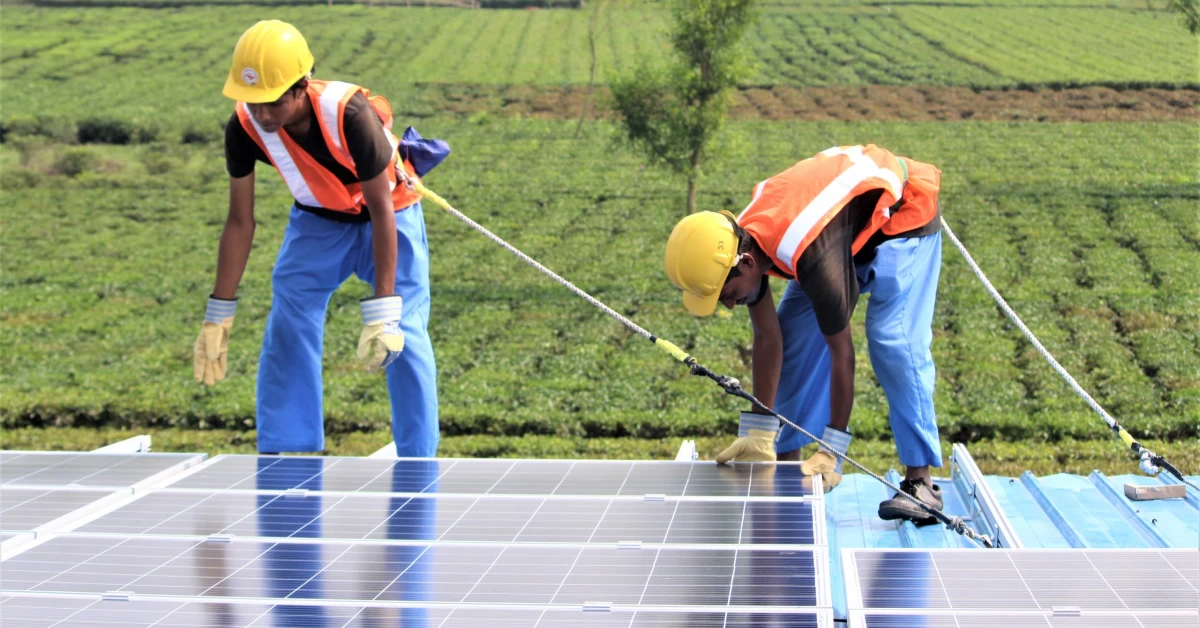
Folks usually wonder, where India’s Rooftop solar scheme fits into its green ambitions. Recent estimates reveal that approximately 2.7 GW capacity has been installed in the rooftop residential sector, benefiting 6.7 lakh households.
A study by the Council on Energy, Environment and Water (CEEW) suggests that over 25 crore households in India could potentially deploy 637 GW of solar energy on rooftops.
Utilizing just one-third of this potential could meet the entire electricity demand of the residential sector, a critical consideration given India’s anticipated position with the largest energy demand growth globally in the next 30 years.
(H.1) Bridging the Affordability Gap
While the technical potential is substantial, making solar energy affordable is a challenge. Most residential consumers, especially in rural areas, fall into low-consumption slabs. Around 85% of the technical potential lies in rooftop solar systems sized between 0-3 kW.
Notably, 30% of this potential is in the 0-1 kW category, often overlooked in policies and subsidy schemes. According to Ministry estimates, installing a 1-2 kW solar power system costs approximately ₹45,000 per unit, with units up to 3 kW eligible for a subsidy of about ₹14,000 per unit.
With a life expectancy of 25 years and a payback period of 3.5 to 4.5 years, proper maintenance is crucial for optimal benefits.
(H.2) Incentivizing Adoption
To encourage consumers to use as low as 1 kW, the MNRE subsidy targets RTS systems of 1-3 kW, potentially unlocking an additional 5 GW. The CEEW study recommends targeted capital subsidies, especially for 0-3 kW RTS systems, and introduces low-cost financing options with fast approval processes and a separate line of credit for residential consumers.
(H.3) Untapped Potential in the MSME Sector
The micro, small, and medium enterprises (MSME) sector, constituting 30% of industrial energy consumption, holds significant untapped solar rooftop potential. Approximately 63 million MSMEs offer a potential of 15-18 GW, exceeding 30% of the overall rooftop target of 40 GW.
(H.4) Empowering MSMEs through Rooftop Solar
Promit Mookherjee from the Centre for Economy and Growth highlights the transformative impact of rooftop solar on the MSME sector. With frequent power cuts and high electricity costs, a shift to rooftop solar can lower production costs for MSMEs.
Operating mainly during the day, these enterprises can meet their power demand without significant operational changes or investment in battery storage systems. Financing remains a challenge, and Mookherjee suggests a cluster-based approach to overcome technical and financial hurdles.
As India strives for a sustainable future, tapping into residential and MSME rooftop solar potential stands as a pivotal step towards achieving its green ambitions.
(I) Future Aspects of Rooftop Solar Scheme
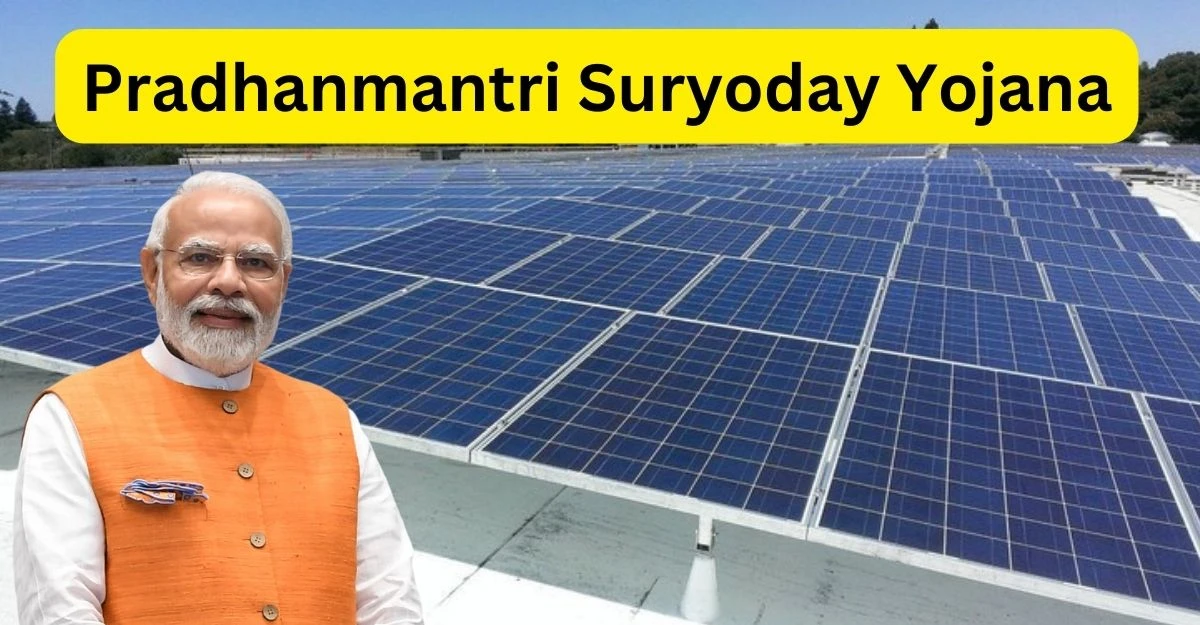
Under the Pradhan Mantri Suryoday Yojana, the Centre is set to cover the entire installation cost of rooftop solar systems for households consuming less than 300 units of electricity per month.
This initiative includes a subsidy increase from 40% to 60%, with the remaining 40% financed by a private developer affiliated with the Power Ministry’s public sector units. Minister for Power and New and Renewable Energy, R.K Singh, revealed that the Centre would subsidize 60% of the installation cost, with the PSU obtaining a bank loan for the remaining amount, repaid through household electricity costs exceeding 300 units.
This customer-funded portion is designed to make the scheme self-sustaining within 7-10 years. The initiative shifts the responsibility of providing electricity to households from individual distribution companies to central government companies, potentially boosting the rooftop solar sector by overcoming financial challenges faced by distribution companies.
In a nutshell, the Rooftop Solar Scheme is not just about solar power; it’s about making it accessible and rewarding for households across the nation!

